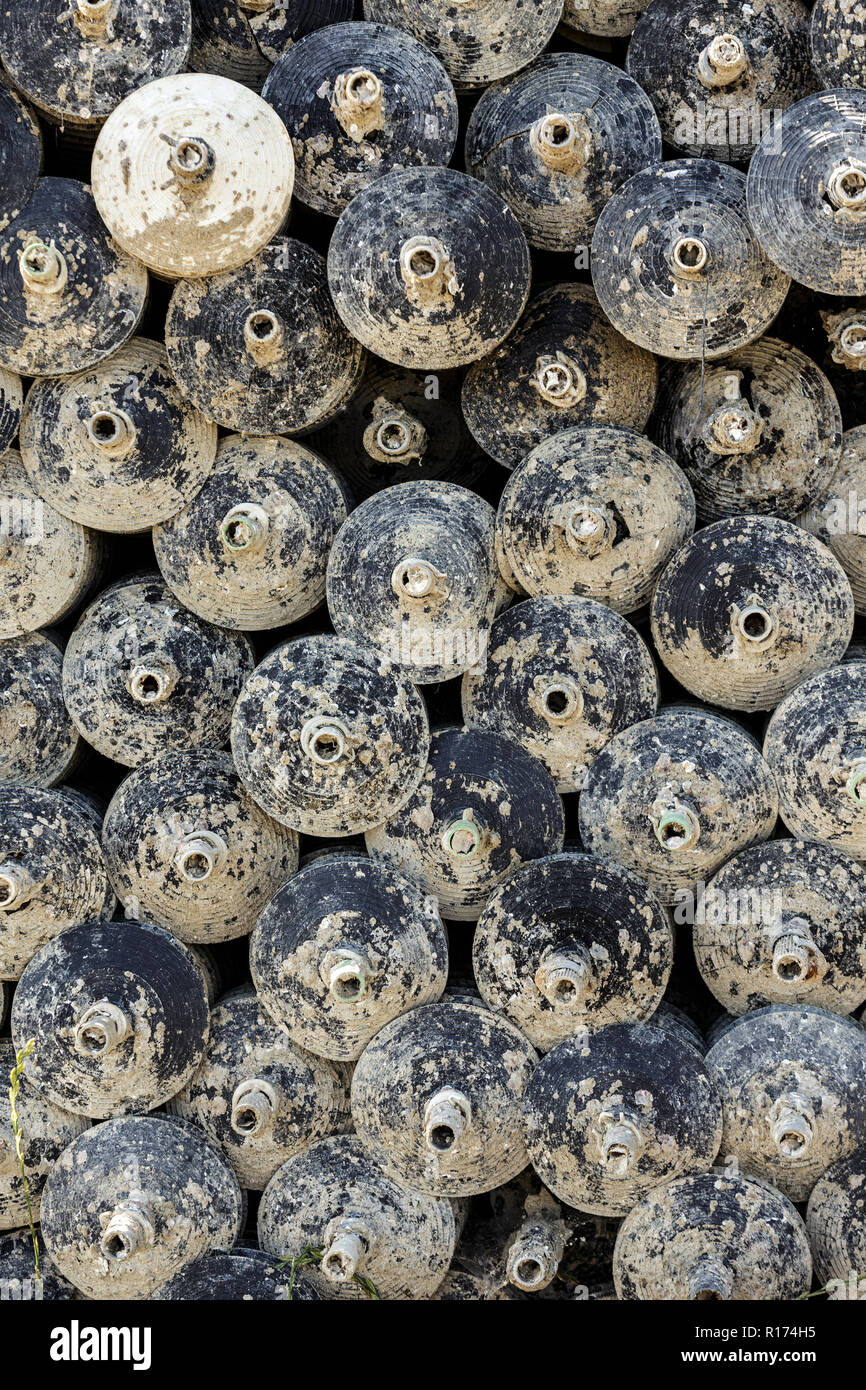

Because of the periodically low salinity of the pond water, the oysters usually had a bland taste, and their inner shells were apt to be riddled with mud blisters caused by the mudworm (Polydora websteri). However, an examination of the oyster population in Island Pond indicated that there was little chance of producing quantities of mature oysters of half-shell quality from the pond. Ocean Pond Corporation was formed in 1962 initially for the purpose of producing marketable oysters for the half-shell market. The relative absence of such a substrate in the Vineyard ponds was perhaps a primary reason for poor oyster production. It contains an abundance of rocks and the shells of dead and living oysters along its margins that provide an ideal surface for attraction of more oysters. Island Pond, on the other hand, is relatively deep, (maximum of about 23 feet), relatively small in surface area, (35 acres), and is surrounded for the most part by glacial till at the edge of the glacial moraine. These ponds have a sand-silt bottom that affords little surface area to which oyster larvae might attach. They are relatively shallow, with a maximum depth of 15 feet, and are much larger in surface area, two exceeding 1,000 acres in size. These Vineyard ponds are essentially shallow depressions in what was a glacial outwash plain. Island Pond differs from the salt ponds on the south shore of Martha’s Vineyard in several important respects. He interested several friends on the Island and was able to put together a small corporation-Ocean Pond Corporation-of which he initially was president. He had retired from his architecture firm and was excited to become involved in a new project. I suggested to my father that Island Pond might be an ideal site to try culturing oysters on a commercial scale. A brief walk around the edge of the pond revealed a large population of oysters of varying sizes and year-classes, attached to the rocks. My father kept a small aluminum skiff at the edge of a brackish water pond-Island Pond-and, in the process of hauling it from the water, I noticed a large number of juvenile oysters, or spat, attached to its bottom. My interest lay chiefly in oysters, but, according to the records and anecdotal information, oyster production from these ponds had been inconsistent from year to year, for reasons not clearly understood.ĭuring this time, I happened to visit my parents on Fishers Island, New York. soft clams, hard clams, bay scallops and oysters. Of particular interest were the Island’s salt Ponds, several of which had over the years produced commercial quantities of shellfish, i.e. In 1959, while employed by the Massachusetts Division of Marine Fisheries, I became interested in the potential for aquaculture on the island of Martha’s Vineyard. Aquaculture now accounts for about 27% of total global fish production. According to a Food and Agriculture Organization report in 2002, marine aquaculture production has increased at an average rate of about 10% per year since 1970. During the past 60 years, world landings have increased by nearly a factor of six, and aquaculture now accounts for nearly 30% of total global fish production.Īlthough the practice of maintaining edible aquatic organisms under controlled or captive conditions is centuries old, aquaculture as an industry is relatively young and has grown extremely rapidly during the past 50 years. The annual harvest of seafood from the world’s oceans is currently between 80 and 90 million tons. 9 Issue 1 Spring/Summer 2009, and is reproduced with the kind permission of the author and the publisher, UConn’s Connecticut Sea Grant. The following article appeared in Wrack Lines, Vol. Island Pond, also known as “Oyster Pond,” has a peninsula jutting into it with a small pond at center. Aerial photo of Island Pond and surrounding ponds, April 2001.


 0 kommentar(er)
0 kommentar(er)
